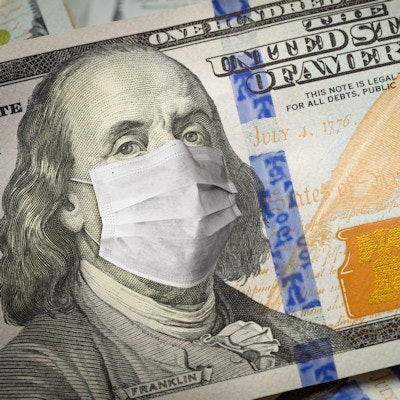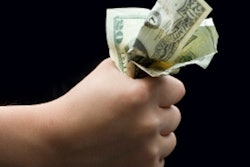
The COVID-19 pandemic affected the income of all dentists in 2020, but female clinicians took a much bigger financial hit than their male colleagues, according to a webinar hosted by the ADA's Health Policy Institute (HPI) on September 2.
Though overall dentist income plummeted 18% in 2020 compared to 2019, female dentists experienced a decrease in net income that was 12 percentage points greater compared to their male counterparts, according to the data.
"The economic impact of COVID-19 continues to affect women differently than men," said Marko Vujicic, PhD, HPI's chief economist and vice president. "This resonates with what is happening outside dentistry."
The findings are based on a survey HPI conducted in June 2021, with net income defined as the amount of money that the responding dentist earned after practice expenses and business taxes were deducted. Income included salary, commissions, bonuses, practice distributions, dividends, and any payments made to a retirement plan on a dentist's behalf.
In 2020, the inflation-adjusted average net income for dentists was $170,164. In 2019, the average income was $207,234. In 2020, female dentists saw a 27% decline in net income, while men experienced a 15% decline, Vujicic said.
The reduction in net income was parallel to a decline in the number of hours worked. Female dentists experienced a much steeper decline in hours worked than male dentists. In 2020, the hours female dentists worked fell 22%, while male dentists' hours decreased by about 15%.
"The pandemic really affected the professional lives and job situations by gender, and dentistry is no exception," Vujicic said.
But why were women's incomes hit harder than men's?
Research has shown that women and men did not feel the effects of the pandemic equally. Many women juggled work and childcare during the pandemic due to school closings across the U.S. This led to women experiencing more workplace and daily life disruptions and stress.
"Is childcare or even care of an elder a factor?" Vujicic asked. "How much of that is the 'why' here? I don't know. If that is the case, why did this disproportionately fall on females over males? Is dentistry OK with this?"
Hygienists took a hit
A lack of childcare is part of the reason why practices continue to have trouble hiring dental hygienists.
Approximately 5% of hygienists who worked prior to the pandemic have not returned to work. Some retired earlier than expected, while others chose not to return due to concerns about COVID-19, workplace safety, and a lack of childcare -- though citing lack of childcare as a reason has started "falling," Vujicic said.
The number of those returning to work has increased over the past few months, but not by much. In May 2021, the ADA and the American Dental Hygienists' Association reported that approximately 6% of dental hygienists who had been employed prior to the pandemic were not working in March 2021.
In February, the ADA released studies showing that the pandemic pushed approximately 8% of hygienists out of the workforce. The ADA warned that a shortage would likely continue until the pandemic was over.
Current data show that "about 90% of practices report it's extremely difficult to hire a hygienist," Vujicic said.




















